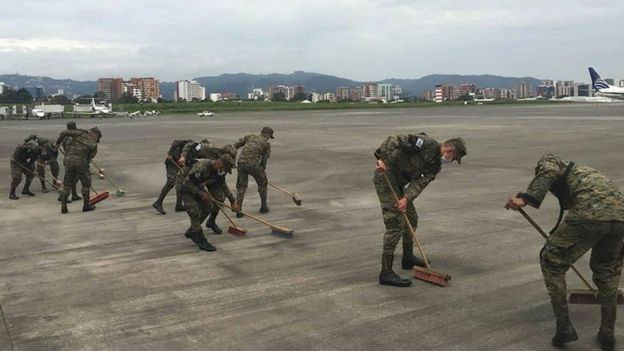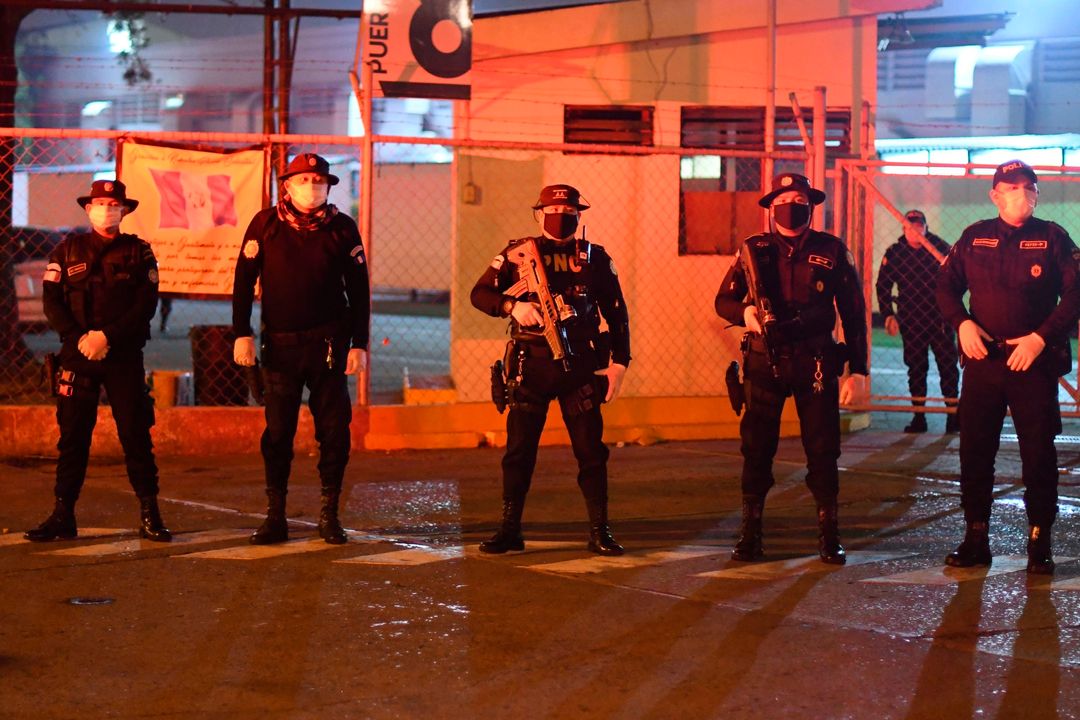This article is more than
6 year oldGuatemala volcano: Dozens die as Fuego volcano erupts
The Fuego volcano, about 40km (25 miles) south-west of the capital Guatemala City, spewed rock, gas and ash into the sky on Sunday.
Fast-moving flows hit villages, killing people inside their homes. Hundreds were injured and many are missing. The country's main airport is closed.
President Jimmy Morales has declared three days of national mourning.
In a statement issued late on Sunday, he spoke of the nation's "deep pain" caused by the "irreparable losses" in human lives.
How exceptional was the eruption?
Fuego is one of Latin America's most active volcanoes. A major eruption devastated nearby farms in 1974, but no deaths were recorded.
Another eruption in February this year sent ash 1.7km (1.1 mile) into the sky.
Sunday's event was on a much greater scale. Ash reached up to more than 6km.
A mix of red-hot rock and gas, known as a pyroclastic flow, rushed down the mountainside and engulfed villages. Unlike slow-moving lava, which people may be able to escape from on foot, pyroclastic flows can reach extremely high speeds.
This is Guatemala's deadliest such event since 1902, when an eruption of the Santa Maria volcano killed thousands of people.

What has the response been?
Hundreds of police officers, soldiers and emergency workers have been sent to affected areas on the slopes of the volcano. They found charred bodies resting on steaming remnants of pyroclastic flow.
Survivors covered in ash were carried away.
Sergio Cabañas, head of the country's National Disaster Management Agency (Conred), said the town of El Rodeo had been "buried".
Other towns affected include Alotenango and San Miguel los Lotes. Rescuers are still trying to reach a number of villages and the death toll is expected to rise.
Temporary shelters have been set up for about 3,000 residents who have been evacuated.

Several children are among the dead. Mr Cabañas said they also included a member of his agency's staff.
What is a pyroclastic flow?
By Paul Rincon, science editor, BBC News website
A pyroclastic flow is a fast-moving mixture of gas and volcanic material, such as pumice and ash. They are a common outcome of explosive volcanic eruptions, like the Fuego event, and are extremely dangerous to populations living downrange.
Just why they are so threatening can be seen from some of the eyewitness videos on YouTube of the Guatemalan eruption. In one, people stand on a bridge filming the ominous mass of gas and volcanic debris as it expands from Fuego.
Some bystanders only realise how fast it is travelling as the flow is almost upon them.
The speed it travels depends on several factors, such as the output rate of the volcano and the gradient of its slope. But they have been known to reach speeds of up to 700km/h - close to the cruising speed of a long-distance commercial passenger aircraft.
In addition, the gas and rock within a flow are heated to extreme temperatures, ranging between 200C and 700C. If you're directly in its path, there is little chance of escape.
Has the eruption reached the capital?
Volcanic ash has fallen as far as Guatemala City. Soldiers have been clearing the runway at the city's La Aurora airport.
A total of about 1.7 million people have been affected in four regions.
Officials have advised people to wear masks as protection against falling ash.

Keywords
More than a dozen killed in Ukraine after Russian strike on apartment block
Israel Launches Retaliatory Strike Against Iran
Tumultuous Trump trial day ends with 12 jurors, 1 alternate selected
Russia's meat grinder soldiers - 50,000 confirmed dead
Apple deletes WhatsApp, Threads from China app store on orders from Beijing
TikTok ban now ‘inevitable’
Kiev demands Israel-style security guarantees
‘URANIUM’: Terrifying detail about Israel’s strike on Iran emerges
Ukraine warns of WW3 ahead of stalled US aid vote



